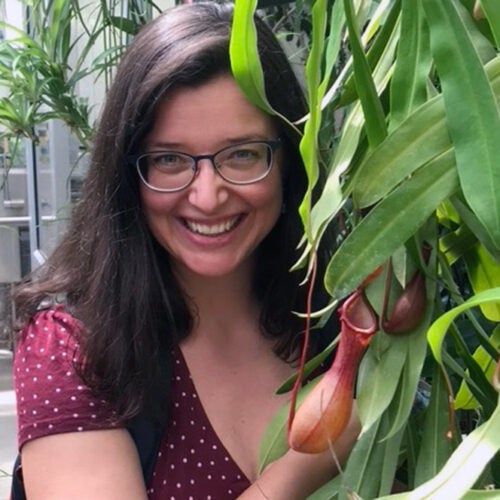
“Out of sight, out of mind.” This saying is especially true for the microbes that live in and on animals and plants, but are invisible to the naked eye. However, for assistant professor of biology Leonora Bittleston, this invisible microbiome is top of mind.
In Spring 2023, Bittleston received a prestigious National Science Foundation CAREER award to study the microbiomes of pitcher plants and sagebrush. Her award will last five years and provide nearly $870,000 to forward the research of microbial ecosystems.
“We’re interested in microbes because–now that we have a much greater appreciation of microbiomes and how complex and pervasive the microbial world is–we also know that most organisms have these very tight, very long-term associations with microbes (bacteria and fungi) and those associations can really affect the fitness of the host,” Bittleston said.
By understanding what drives certain microbes to assemble and coexist (or not) in communities on these plants, Bittleston’s research will inform the basic science around the microbiomes of these plant species and could ultimately impact conservation. An important component of the research will be exploring how to best replicate and maintain a complex microbiome in a lab setting.
“In the way that humans have a microbiome that can affect our health, plants also have a microbiome, and there are different ways you can look at it,” Bittleston said.
Pitcher Plants
Carnivorous pitcher plants like the Sarracenia have a unique pitcher-like shape that holds water and attracts insects that are then digested to provide nutrients for the plant. However, Bittleston wants to know how the microbial species living in the pitcher plant’s water coexist and support each other and the plant itself.
In her research, Bittleston especially wants to answer an often overlooked question: “Why do so many species not coexist in a lab setting, when we see so many species coexisting in nature?” Bittleston explained that in current microbiome research, most experiments focus on just two species, but that is only a shadow of a natural ecosystem in which communities can range from hundreds to thousands of species.
Learn more about Bittleston’s work with pitcher plants.
Sagebrush
A secondary plant of study supported by this award is the West’s ubiquitous Big Sagebrush, a plant species that is under threat from wildfire, drought, climate change and urban development.
In the lab and in the field, sagebrush has already provided Bittleston’s team with a unique challenge to studying microbial communities.
“It’s more complex than we initially thought it would be,” Bittleston said. “Sagebrush itself produces so many secondary chemicals, and so many of those are antimicrobial. We expected to see a simpler microbial community on sagebrush leaves, but it’s actually relatively complex. And it’s more complex externally than internally.”
By working with sagebrush, Bittleston will be able to inform the science and conservation of the plant, and also create hands-on research opportunities with students from the university, regional community colleges, and K-12 institutions in Idaho, particularly for first-generation, low-income, rural, Hispanic and Latine students.
The team will also create an i-STEM Summer Institutes professional development workshop for educators and will work with sixth through twelfth grade teachers to build educational research tools using publicly available bacterial species and 3D-printed equipment.